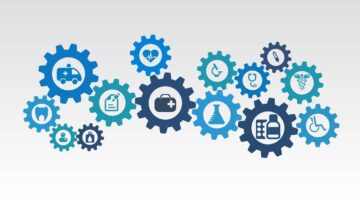
Medical devices take multiple years and millions of dollars to bring to market. Regulations play a huge role: medtech manufacturers must meet a range of requirements to get devices approved – or risk wasting their investment.
The high cost of failure encourages many manufacturers to embrace a methodical, regulation-first approach to development. But the tradeoff is patient care. The slower the pace of development and approval, the longer patients go without treatment options that could dramatically impact their lives.
Manufacturers need a way to get products to market faster without creating regulatory risk. Even so, many hesitate to embrace an Agile methodology: it can feel too breakneck for a highly regulated environment.
With a few adaptations, though, Agile can work in this space. Here, I’ll share three tips to help bring the benefits of Agile to medtech manufacturing.
1. Identify your minimally regulated viable product
There’s a common saying in medtech: there’s no such thing as a regulated MVP.
That’s true, in a sense. You can’t get a product to market until it gets regulatory approval. And it’s not going to get approved until it’s nearly complete. More often than not, that process involves clearing sky-high regulatory hurdles and can drag out your time to release.
But what if you could lower the barrier for approval? Enter the minimally regulated viable product (or MRVP).
As the name suggests, this concept anchors your product development to the feature set with the lowest regulatory burden. These features are often simpler and faster to build. What’s more, they’re still highly valuable to your users.
For instance, let’s say you’re building a diabetes management app that collects and analyzes data from a wearable sensor. It also lets users track their diet, activity, and other health data in one place.
Certain features – like diet and activity tracking – have a low regulatory burden (or may not have one at all). But they can still have an impact on patient outcomes. You can make this feature set your MRVP to get a release out fast.
But speed to market isn’t the only benefit. When you launch an MRVP, you can deliver value to patients sooner while building brand affinity for your product. And as you learn from those users, you can iterate to better meet their needs.
2. Make regulatory burden a roadmapping vector
Effective Agile development in medtech uses regulatory burden as a vector throughout the full product roadmap. In other words, you can assess the burden of each feature set to prioritize and schedule development.
For example, let’s say you have five distinct feature sets:
- Diet and activity tracking
- Continuous glucose monitor integrations
- Medication management (logging, reminders, etc.)
- Telehealth communications (via secure chat, for instance)
- Personalized care recommendations
You can rank their regulatory burden alongside other factors, like development complexity and their centrality to the product. Then, you can front-load valuable but lighter lifts – and remove the dependency on the heaviest. Along the way, you can parallel track feature sets so they’re ready if they need to be independently released.
This approach lets you get more features to market in less time than a traditional roadmap. It also lets you achieve relatively quick wins. Maybe you learn that users value certain features more than you expected. Or you find that they’re using those features in new ways that could inform the rest of your product development. Each insight builds momentum toward a successful end product.
3. Focus on freedom to release
As the Agile principle goes, the best marker of progress is working software. That thinking can apply to many medical devices. But to create working software, it’s important to embrace “freedom to release”: the ability to push out new features with minimal friction.
That might sound counterintuitive in an environment with as many regulations as medical care. But the steps we’ve discussed so far let you keep regulations from becoming roadblocks.
With an MRVP, for instance, you can plant a flag in the marketplace. With each successive release, you can entrench your brand among existing users and expand to new ones. The feedback you gather along the way – via product reviews, for example – can both inform future developments and serve as valuable social proof to help win over new users.
The bottom line? Freedom to release ensures steady progress – which is a lot better than a monthslong stall.
Prioritize patients with an agile development cycle
It’s worth emphasizing that medical device regulations aren’t an enemy: they ensure patient safety at every stage of use. Even so, it’s important to balance regulatory demands with patients’ immediate care needs. And snail-paced development can delay effective treatment for years.
With Agile thinking, you can speed up the full product development cycle, from ideation to execution to release. That means patients see value faster – and you can more quickly see ROI.
Jaeson Paul is the Head of CX at CI&T. CI&T partners with the world's largest pharmaceutical, consumer healthcare, and medical device manufacturers to create better experiences for patients and healthcare professionals.
This post appears through the MedCity Influencers program. Anyone can publish their perspective on business and innovation in healthcare on MedCity News through MedCity Influencers. Click here to find out how.











